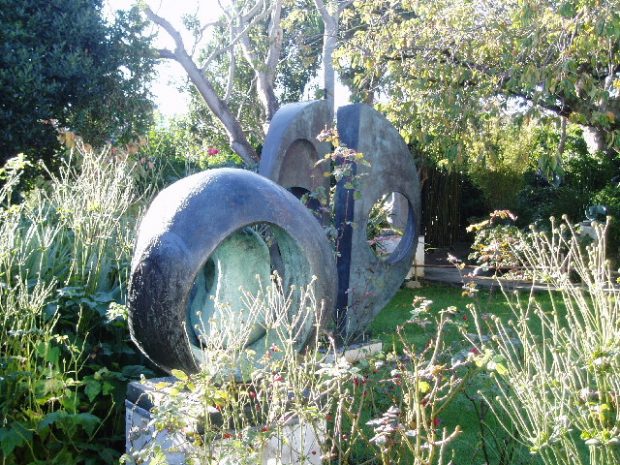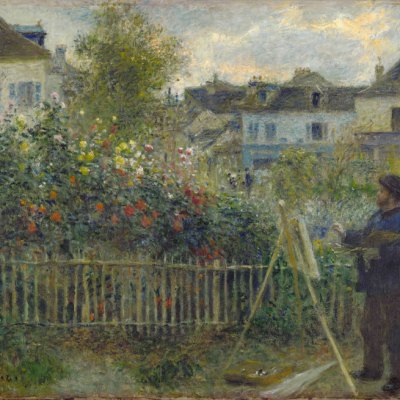Artists have often looked for inspiration outdoors and some have created gardens that are masterpieces of planting and landscaping. Apollo’s editors pick eight of the best.
Charleston, Vanessa Bell and Duncan Grant
The garden at Charleston, East Sussex. Photo: © Charleston Trust/Fiona Dennis
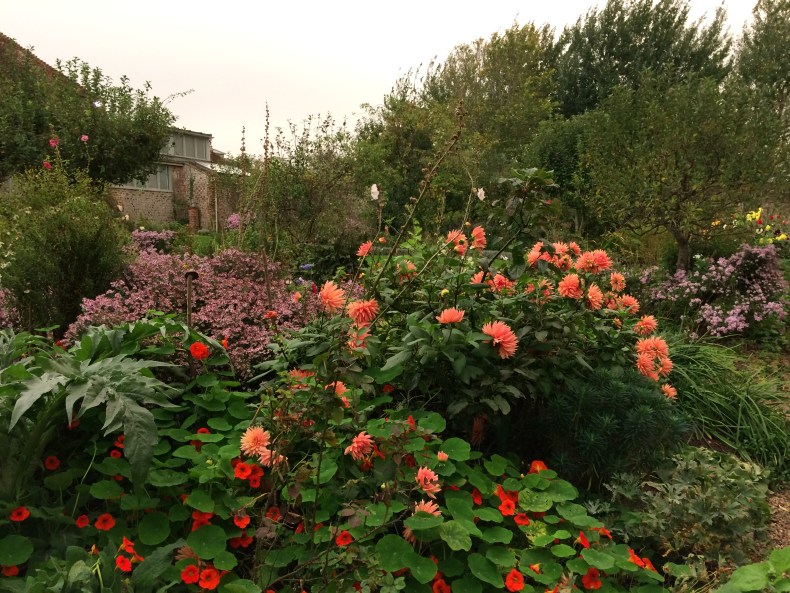
The home of Bell and Grant from 1916, Charleston was the meeting place of the Bloomsbury group and inspired its artists for more than a century. The walled garden of the old farmhouse was designed in stages by several of its members. Roger Fry designed the lawn, pool and flower beds after the First World War; in the 1940s Quentin Bell created a mosaicked piazza out of broken crockery.
Giverny, Claude Monet
Claude Monet sitting on a bench beside the water lily pond in his garden at Giverny, 1910s. Photo: © Hulton Archive/Getty Images
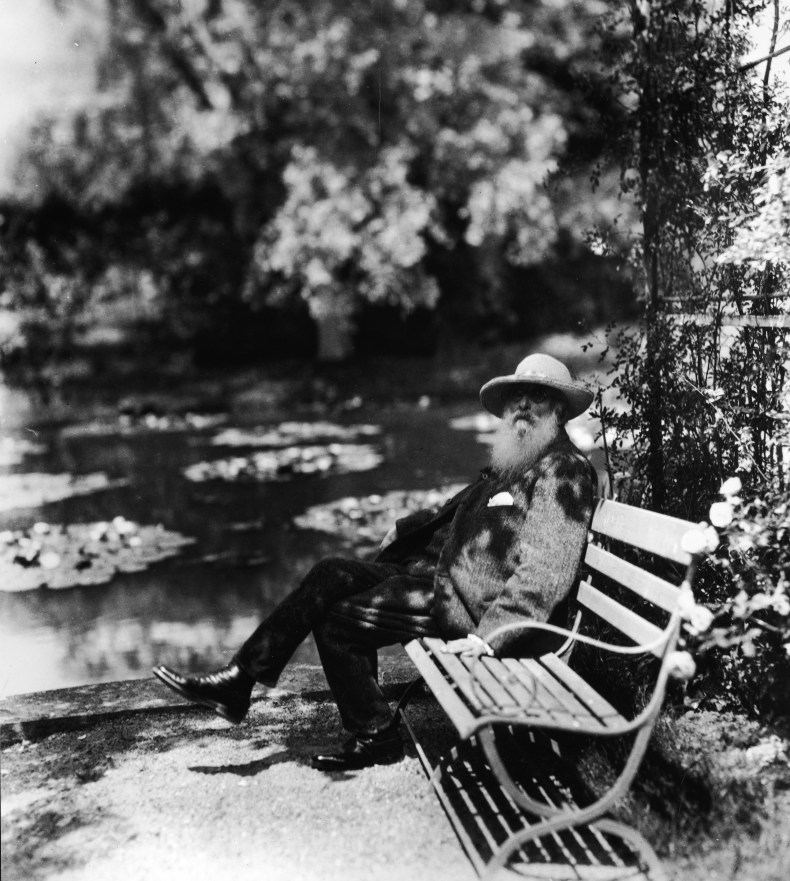
Monet moved to the Norman village of Giverny in 1883, and developed his flower and water gardens in the decades that followed. Much of his money went on buying plants, and in time he employed six gardeners to maintain his horticultural haven. Restored from 1977 onwards (the pond had to be dug again), the garden has all the colour that captivated Monet – even if, with half a million visitors a year, selfie sticks now mingle with stalks, iPads with lily pads.
Little Sparta, Ian Hamilton Finlay
Apollon Terroriste by Ian Hamilton Finlay at Little Sparta. Photo: yellow book ltd/Wikimedia Commons (used under a Creative Commons licence [CC BY 2.0])

Majorelle Garden, Jacques Majorelle
The Majorelle Garden, Marrakech. Photo: giggel/Wikimedia Commons (used under Creative Commons licence [CC BY 3.0])
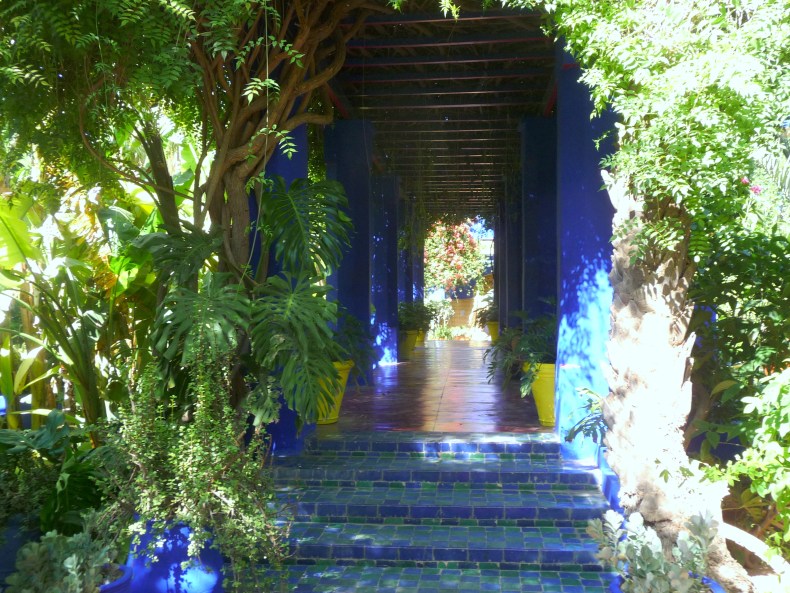
Munstead Wood, Gertrude Jekyll
The Summer Garden at Munstead Wood. Image courtesy Gardenvisit

The horticulturalist, artist and writer Gertrude Jekyll’s understanding of garden design was inspired by the use of colour and texture in the paintings of Turner and the Impressionists. The garden at Munstead Wood, her home from 1882, shows the full range of her gift for bringing these qualities to life. Jekyll’s Arts and Crafts style house was designed by Edward Lutyens to complement the garden, in the first of a series of influential collaborations between the gardener and the architect.
Prospect Cottage, Derek Jarman
Derek Jarman’s cottage at Dungeness, Kent. Photo: courtesy Art Fund
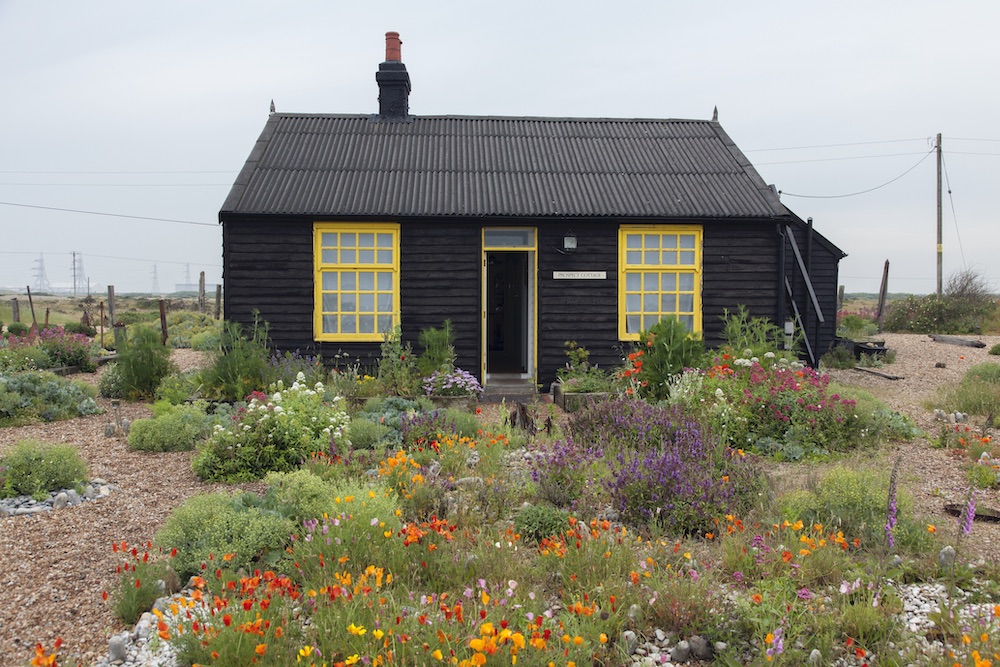
‘Paradise haunts gardens, and some gardens are paradises. Mine is one of them.’ So said the filmmaker and artist Derek Jarman of his garden on the shingle shore around Prospect Cottage, near Dungeness Power Station in Kent. The back garden in particular, with no beds or borders to mark its bounds, is a place of sparse, lyrical beauty.
Seebüll, Emil Nolde
Emil Nolde’s garden in Seebüll. Photo: Wikimedia Commons/Jens Cederskjold (used under Creative Commons licence [CC BY 3.0])

Trewyn Studio and Garden, Barbara Hepworth
Barbara Hepworth’s garden at Trewyn, St Ives. Photo: Rowena Ford/Wikimedia Commons (used under a Creative Commons licence [CC BY-SA 2.0])
